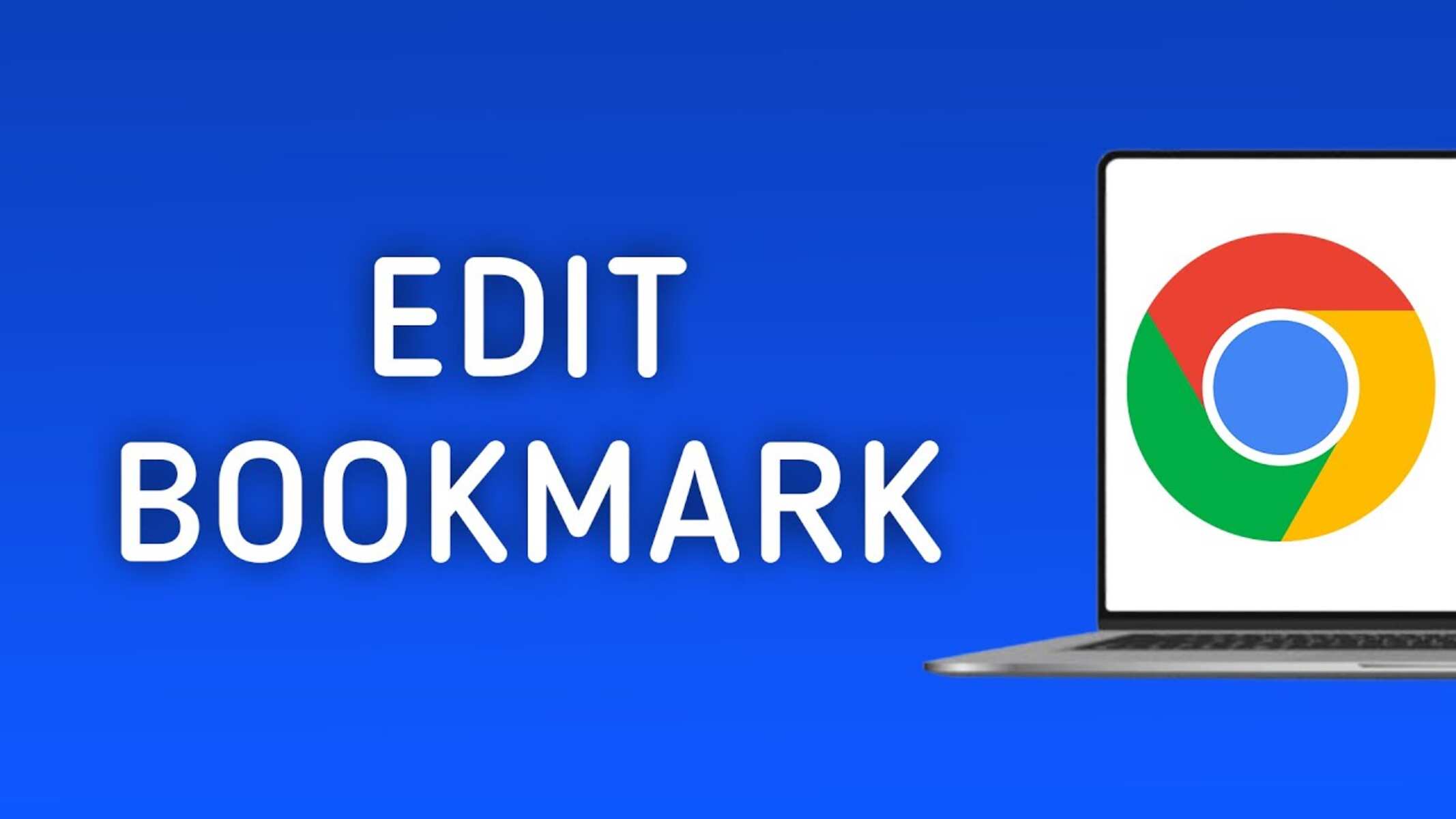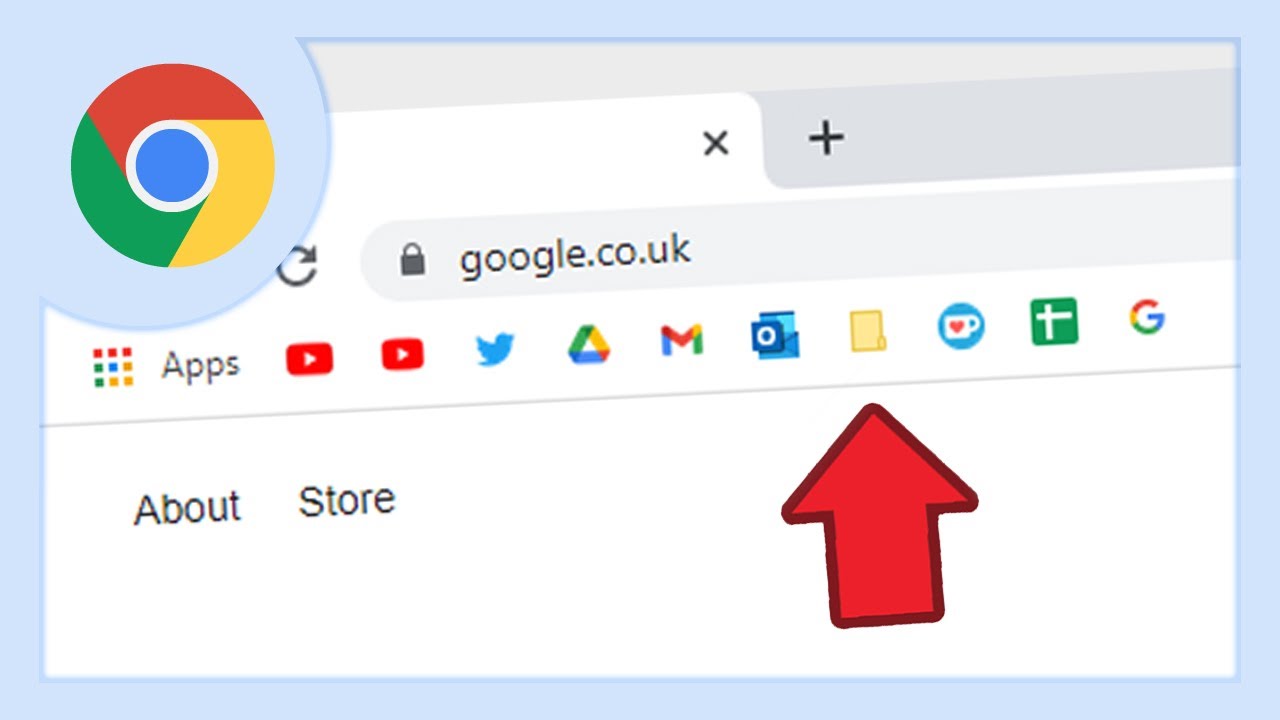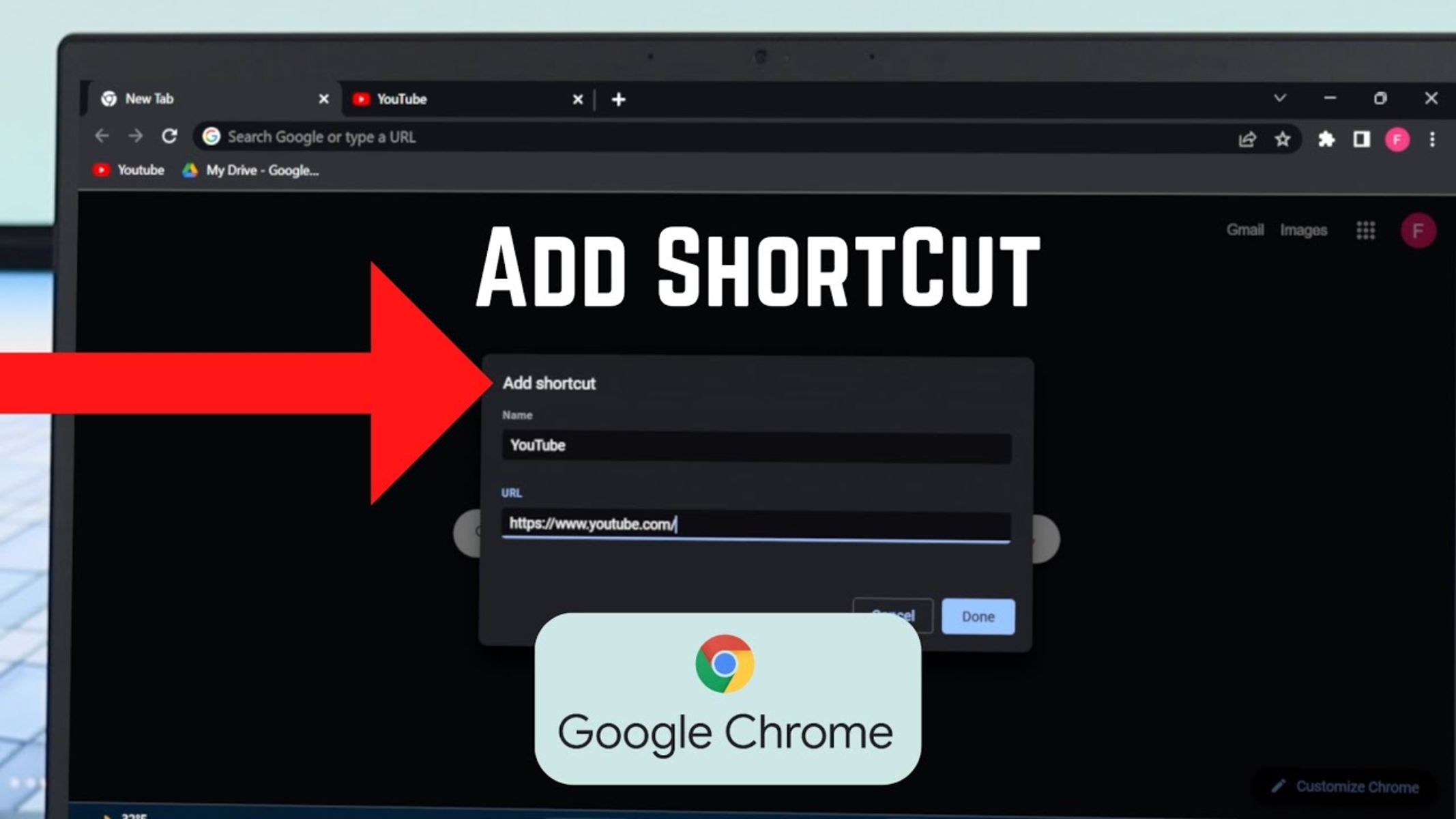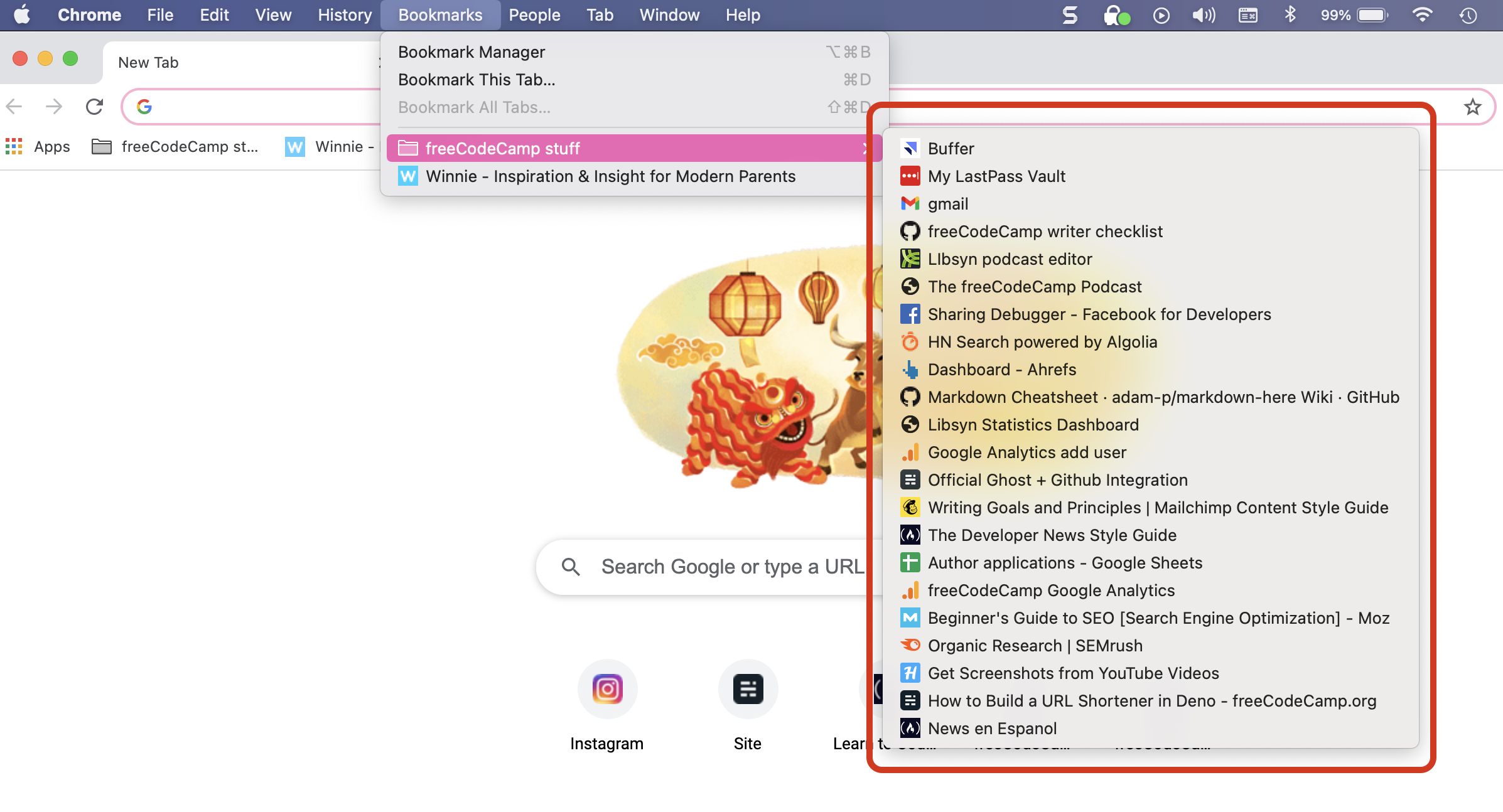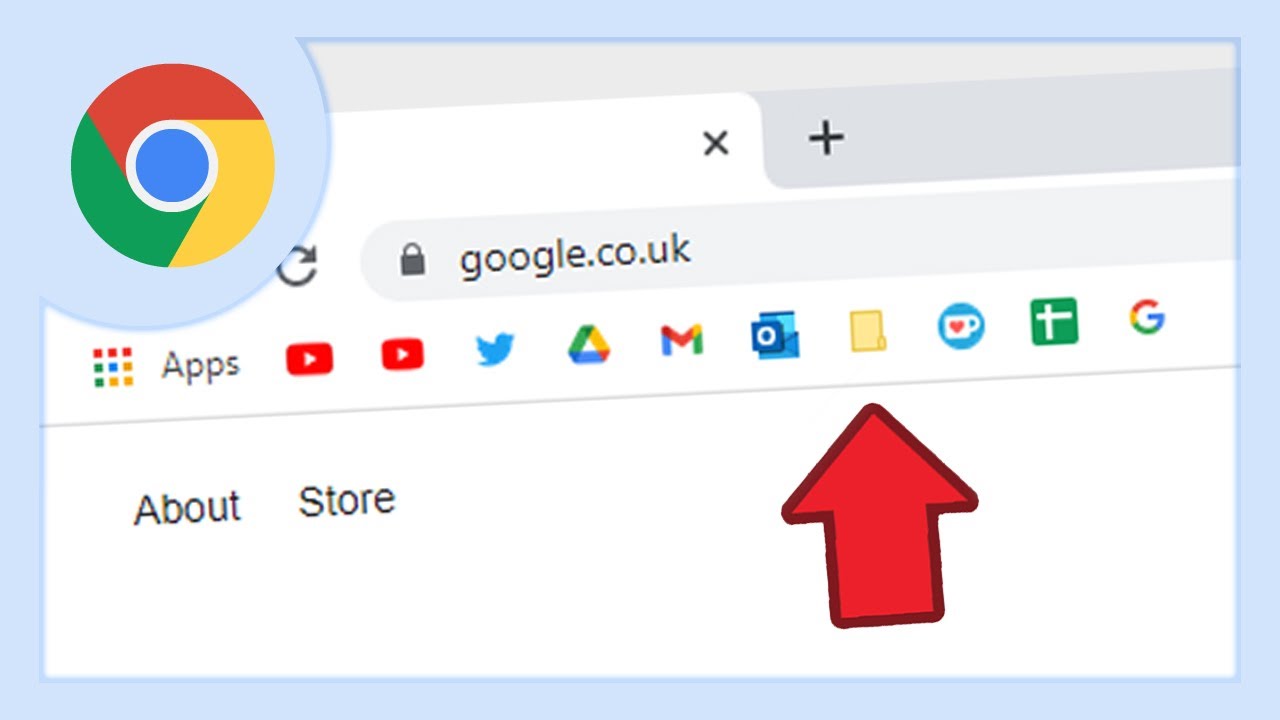Introduction
Managing bookmarks is an essential aspect of optimizing your browsing experience. Whether you're a casual internet user or a seasoned professional, having a well-organized collection of bookmarks can significantly enhance your productivity and efficiency. Bookmarks allow you to save and access your favorite websites with just a click, eliminating the need to remember or type in lengthy web addresses every time you want to revisit a particular site.
In this article, we will delve into the intricacies of editing bookmarks on Chrome, one of the most popular web browsers globally. Chrome offers a user-friendly interface and a plethora of features that make managing bookmarks a breeze. By mastering the art of editing bookmarks, you can tailor your browsing experience to suit your specific needs and preferences.
Whether you want to update the name of a bookmark, modify its URL, or reorganize your entire collection, Chrome provides the tools and functionalities to accomplish these tasks seamlessly. By the end of this guide, you will be equipped with the knowledge and skills to take full control of your bookmarks, ensuring that your browsing experience is as efficient and enjoyable as possible.
Let's embark on this journey to unlock the full potential of your Chrome bookmarks and discover the various techniques for editing, organizing, and optimizing your bookmark collection. Whether you're a student, professional, or avid internet enthusiast, the ability to manage your bookmarks effectively is a valuable skill that can streamline your online activities and enhance your overall browsing experience.
Accessing the Bookmark Manager
Accessing the Bookmark Manager in Chrome is a straightforward process that provides you with a comprehensive overview of your saved bookmarks and the necessary tools to manage them effectively. Whether you want to add new bookmarks, edit existing ones, or reorganize your collection, the Bookmark Manager is your gateway to seamless bookmark management.
To access the Bookmark Manager in Chrome, you can use the following methods:
-
Using the Menu Bar:
- Click on the three-dot menu icon located in the top-right corner of the Chrome window.
- From the dropdown menu, hover over "Bookmarks" to reveal additional options.
- Select "Bookmark Manager" from the expanded menu. This will open the Bookmark Manager in a new tab, allowing you to view and manage your bookmarks effortlessly.
-
Using Keyboard Shortcuts:
- Press "Ctrl + Shift + O" on Windows/Linux or "Command + Option + B" on Mac to open the Bookmark Manager directly.
Once you have accessed the Bookmark Manager, you will be presented with a user-friendly interface that displays your bookmarks in a structured manner. The left-hand sidebar provides access to various bookmark folders, including the "Bookmarks Bar," "Other Bookmarks," and any custom folders you may have created. Additionally, the main window displays a list of your saved bookmarks, along with options to search, edit, and organize them.
The Bookmark Manager also offers advanced functionalities, such as the ability to import and export bookmarks, create new folders, and manage bookmark extensions. This centralized hub serves as a command center for all your bookmark-related activities, empowering you to maintain a well-organized and easily accessible collection of saved web pages.
By accessing the Bookmark Manager, you gain the power to customize and optimize your browsing experience according to your preferences. Whether you're a multitasking professional, a research enthusiast, or a casual internet user, the Bookmark Manager is a valuable tool that puts you in control of your online resources.
In the next sections, we will explore the various actions you can perform within the Bookmark Manager, including editing bookmarks, organizing them into folders, and deleting unnecessary entries. These capabilities will enable you to tailor your bookmark collection to suit your evolving needs and interests, ensuring that your browsing experience remains efficient and personalized.
Editing Bookmarks
Editing bookmarks in Chrome allows you to customize and refine your saved web pages to better suit your preferences and needs. Whether you want to update the name of a bookmark, modify its URL, or assign it to a different folder, Chrome provides intuitive tools to facilitate these adjustments seamlessly.
To edit a bookmark in Chrome, follow these simple steps:
-
Accessing the Bookmark Manager: Open the Bookmark Manager using the methods outlined in the previous section. Once you're in the Bookmark Manager interface, you will have a clear overview of your saved bookmarks and the necessary options to edit them.
-
Locating the Bookmark: Navigate through your bookmark folders or use the search functionality to locate the specific bookmark you wish to edit. Once you've found the bookmark, right-click on it to reveal a dropdown menu of options.
-
Editing the Bookmark: From the dropdown menu, select the "Edit" option. This will open a dialog box where you can modify various attributes of the bookmark, including the name, URL, and the folder it belongs to. Make the necessary changes and ensure that the updated information accurately reflects the content and purpose of the bookmark.
-
Saving the Changes: After making the desired edits, click "Save" or "Done" to apply the changes to the bookmark. Your modifications will be instantly reflected in the Bookmark Manager, ensuring that the bookmark is updated according to your specifications.
By following these steps, you can effortlessly edit and customize your bookmarks in Chrome, ensuring that your collection remains relevant and organized. Whether you're updating bookmarks for work-related research, academic studies, or personal interests, the ability to tailor the details of each bookmark empowers you to curate a personalized browsing experience.
The flexibility offered by Chrome's bookmark editing capabilities allows you to adapt your bookmark collection to evolving interests and priorities. Whether you're rebranding a favorite website, updating outdated links, or categorizing bookmarks into specific folders, the editing functionality in Chrome provides the necessary tools to streamline these tasks with ease.
In the next section, we will explore the process of organizing bookmarks, which complements the editing capabilities by allowing you to structure and categorize your bookmark collection effectively. This holistic approach to bookmark management ensures that your browsing experience is optimized for efficiency and accessibility, reflecting your unique preferences and requirements.
Organizing Bookmarks
Organizing bookmarks is a pivotal aspect of maintaining a well-structured and easily accessible collection of saved web pages. Chrome offers a range of features and functionalities that empower users to categorize, label, and arrange their bookmarks according to their specific preferences and requirements. By organizing bookmarks effectively, users can streamline their browsing experience, enhance productivity, and ensure that relevant resources are readily available when needed.
Creating Folders
One of the fundamental methods for organizing bookmarks in Chrome is by creating folders within the Bookmark Manager. This allows users to group related bookmarks together, making it easier to navigate and locate specific resources. To create a new folder, simply navigate to the desired location within the Bookmark Manager, right-click, and select the "New Folder" option. Users can then assign a name to the folder and begin populating it with relevant bookmarks.
Sorting and Categorizing
Chrome provides the flexibility to sort and categorize bookmarks based on various criteria, such as alphabetical order, date added, or by the website's name. This functionality enables users to arrange their bookmarks in a manner that aligns with their organizational preferences. Additionally, users can assign specific labels or tags to bookmarks, allowing for further categorization and easy retrieval of resources based on predefined keywords or topics.
Utilizing the Bookmarks Bar
The Bookmarks Bar in Chrome serves as a convenient space for quick access to frequently visited websites and essential resources. By strategically organizing bookmarks on the Bookmarks Bar, users can create a streamlined navigation experience, with direct one-click access to their most accessed web pages. This feature is particularly beneficial for users who prioritize efficiency and quick access to their preferred online destinations.
Utilizing Extensions for Enhanced Organization
Chrome extensions, such as bookmark management tools and tab organizers, offer advanced capabilities for organizing and managing bookmarks. These extensions provide additional features, such as nested folders, advanced sorting options, and synchronization across devices, further enhancing the organizational capabilities within Chrome's bookmark ecosystem.
By leveraging these organizational features and techniques within Chrome, users can curate a personalized and efficient bookmark collection that aligns with their browsing habits and information needs. Whether it's arranging bookmarks into thematic folders, utilizing labels for easy identification, or optimizing the Bookmarks Bar for quick access, Chrome's robust organizational tools empower users to tailor their browsing experience to their unique preferences and workflows.
Deleting Bookmarks
Deleting bookmarks in Chrome is a simple yet crucial aspect of maintaining a streamlined and relevant bookmark collection. Over time, the websites we bookmark may become outdated, irrelevant, or simply no longer serve a purpose. In such cases, removing unnecessary bookmarks is essential to declutter and optimize your browsing experience. Chrome provides intuitive methods for deleting bookmarks, allowing users to efficiently manage their collection and ensure that it remains up to date and relevant.
To delete a bookmark in Chrome, follow these straightforward steps:
-
Accessing the Bookmark Manager: Open the Bookmark Manager using the methods outlined earlier. Once you're in the Bookmark Manager interface, you will have a clear overview of your saved bookmarks and the necessary options to manage them.
-
Locating the Bookmark: Navigate through your bookmark folders or use the search functionality to locate the specific bookmark you wish to delete. Once you've found the bookmark, right-click on it to reveal a dropdown menu of options.
-
Deleting the Bookmark: From the dropdown menu, select the "Delete" or "Remove" option. Chrome will prompt you to confirm the deletion to ensure that the action is intentional. Upon confirmation, the selected bookmark will be permanently removed from your collection.
Additionally, users can also delete bookmarks directly from the Bookmarks Bar by right-clicking on the bookmark and selecting the "Delete" option.
By following these steps, users can efficiently declutter their bookmark collection, removing obsolete or redundant entries to maintain a concise and relevant set of saved web pages. Whether it's eliminating bookmarks for outdated resources, redundant links, or temporary references, the ability to delete bookmarks in Chrome ensures that your collection remains focused and tailored to your current interests and needs.
The process of deleting bookmarks is not only about decluttering, but it also reflects the dynamic nature of our online activities. As our browsing habits and interests evolve, the ability to remove outdated bookmarks allows us to keep our collection aligned with our current preferences and priorities. This proactive approach to managing bookmarks ensures that our browsing experience remains efficient, personalized, and reflective of our ever-changing online landscape.
In the next section, we will explore the significance of maintaining a well-organized and curated bookmark collection, highlighting the benefits of effective bookmark management and the impact it has on our overall browsing experience.
Conclusion
In conclusion, mastering the art of editing, organizing, and managing bookmarks in Chrome is a valuable skill that can significantly enhance your browsing experience. By accessing the Bookmark Manager, users can gain full control over their saved web pages, allowing them to tailor their collection to suit their evolving needs and interests. The ability to edit bookmarks empowers users to customize and refine their saved resources, ensuring that each bookmark accurately reflects its content and purpose.
Furthermore, the organizational features within Chrome's Bookmark Manager enable users to structure and categorize their bookmarks effectively. Whether it's creating folders, sorting bookmarks, or utilizing the Bookmarks Bar, Chrome provides a range of tools to streamline the organization of saved web pages. These organizational capabilities not only enhance efficiency but also contribute to a personalized and curated browsing experience.
The process of deleting bookmarks is equally important, as it allows users to declutter their collection and ensure that only relevant and current resources are retained. This proactive approach to managing bookmarks reflects the dynamic nature of our online activities, aligning our collection with our evolving interests and priorities.
By mastering the techniques for editing, organizing, and managing bookmarks in Chrome, users can optimize their browsing experience, improve productivity, and ensure that their saved resources remain relevant and accessible. Whether it's for work, research, or personal interests, the ability to tailor your bookmark collection to your specific needs is a valuable asset in today's digital landscape.
In essence, effective bookmark management is not just about organizing web links; it's about curating a personalized and efficient browsing experience that aligns with your unique preferences and workflows. As you continue to explore the vast expanse of the internet, remember that your bookmarks are more than just saved web pages – they are a reflection of your digital journey, tailored to accompany you as you navigate the online realm.







